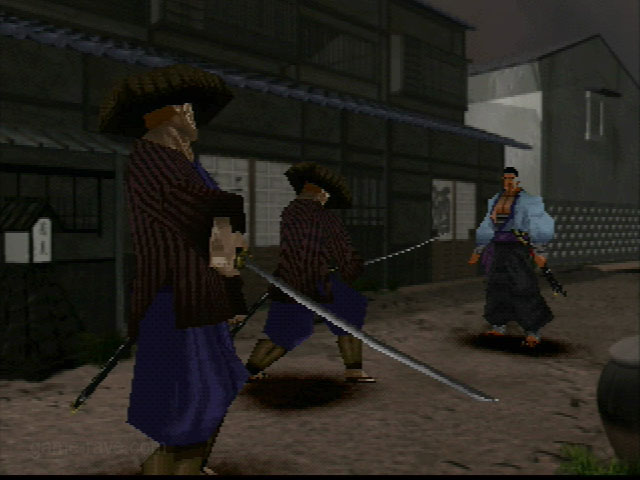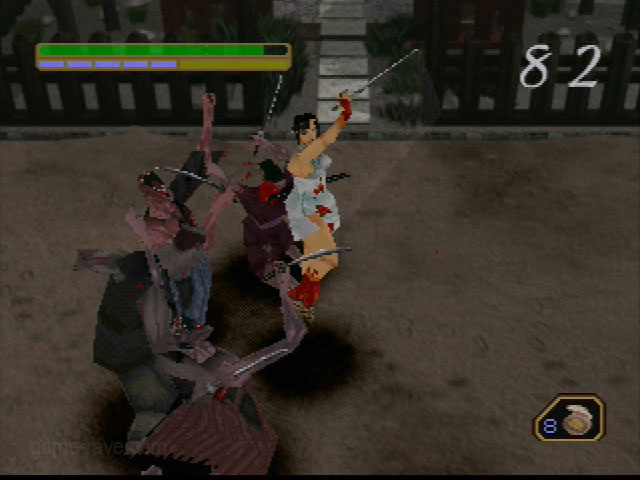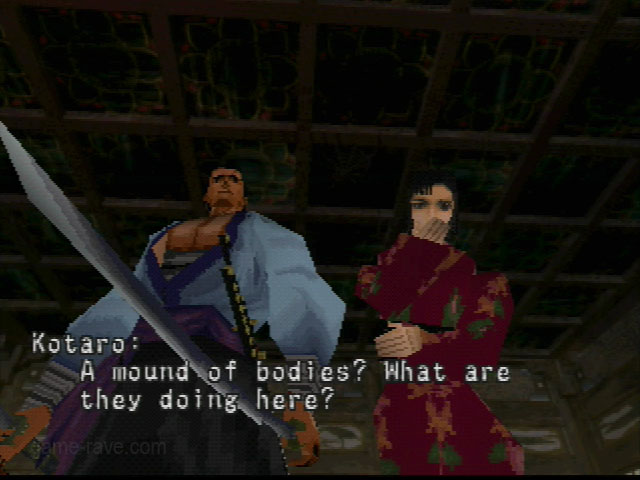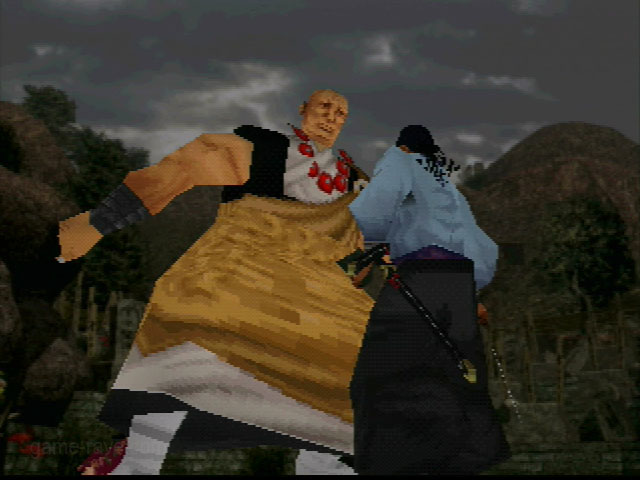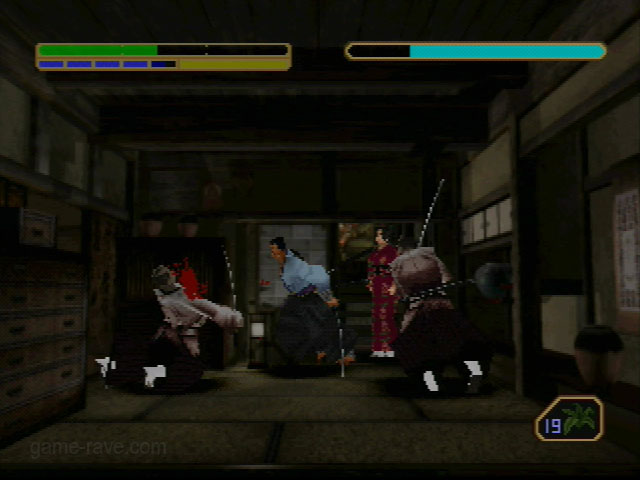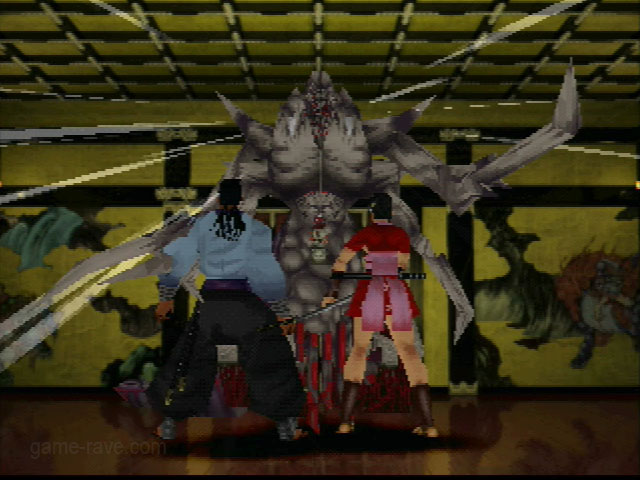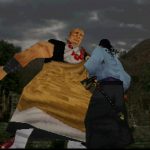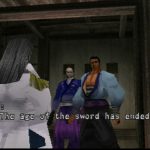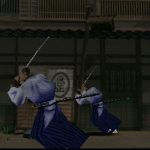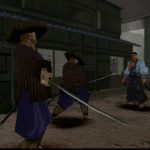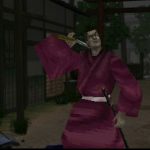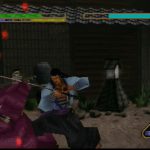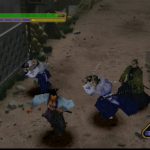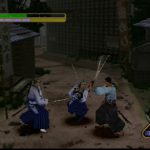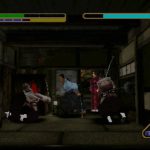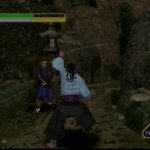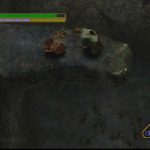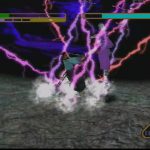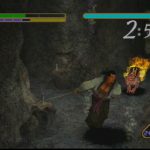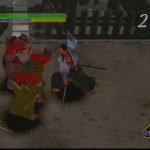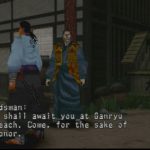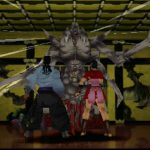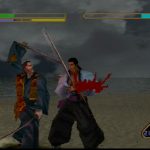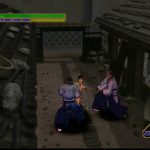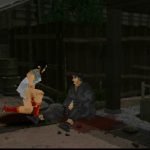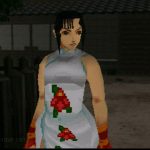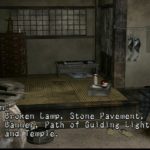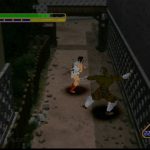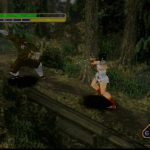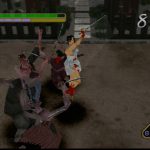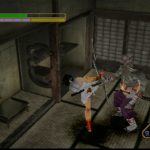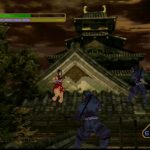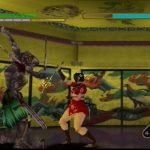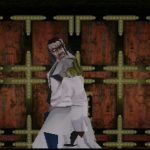| Genre: Action |
CDs: 1 |
|---|---|
| Publisher: Konami |
Released: September 6, 1999 |
| Developer: Konami |
UPC: 0 83717 17040 2 |
| Sony ID: SLUS-00822 |
PSRM: 013430 |
| Players: 1 Player |
Memory: 1 Block |
| Accessories: Analog, Vibration |
|
| ESRB: Mature – Animated Blood, Animated Violence |
|
| Box Copy:
Test Your Samurai soul In a land where the suffering is great – and the corruption is even greater – two warriors have come to solve a mystery and seek revenge. When a shipment of gold disappears a spy is dispatched to recover it, but when he vanishes as well, a brave Ronin and the spy’s headstrong Sister become embroiled in a conspiracy that may cost them something far more precious than gold…
|
|
Variants
- There are no known variants.
Misprints
- There are no known misprints.
Review
In the year of our PlayStation 1999 Sony and their third-party partners were still cranking out the hits on the little gray box that could. But more importantly, they were also still taking chances on new IPs and bringing over a variety of games from Japan.
Konami just so happened to bring one of their lesser known games to the states under the title Soul of the Samurai. A single player adventure featuring the Ronin Kotaru and the ninja Lin. The back of the box shares the tale of a gold shipment that disappeared in the region. A spy was sent to investigate, but once they disappeared as well, the spy’s sister Lin goes to investigate. Kotaru happens along Lin’s path while he is investigating a strange occurrence on the way to a childhood friend’s dojo. From there, the tale of treachery and horror begins.
Kotaru and Lin are essentially in the same game play roots as Chris and Jill of Resident Evil fame. Kotaru is limited to just his swords and healing options, along with more boss fights. This provides the game’s Hard route. Lin on the other hand, can use ninja accessories like stars, smoke bombs, along with the healing elements. Where the ronin has the harder path, the ninja has a more resource management angle to her with less boss fights.
Depending on which character you pick will determine the areas of the map in play. In general, the village you run around in has four major locations; the dojo, the forest and beach, the temple, and the castle. One region in each play-through can be skipped, but if you do go it will provide you with a bountiful amount of healing items and extra secondary weapons based on the character.
Game play is reminiscent of the already mentioned Resident Evil games, with pre-rendered backgrounds and 3D characters running around on top of it. The world is centered around a town square that acts as a hub. From there, you have access to a dojo, a temple, a forest and beach, and then the final castle location. There are only 1 or 2 real puzzles in the game, with Kotaru’s being the hardest without a little understanding of timing and physics.
The rest of the game is sword-to-sword combat as Kotaru and Lin solve their respective missions and side quests. When fighting the enemy characters, you’ll be able to lock on them, and then use different sword techniques to keep them at bay. As you defeat the various samurai and creatures, you’ll earn Experience Points that will unlock bonus special moves that provide ample amounts of damage. These moves however are tied to what weapon is equipped – so based on the particular sword’s stats, it may not be able to use some or all of the new techniques.
While annoying at first, it does provide a bit of strategy and allows for personal preference rather than just constantly using the strongest weapon. In Kotaru’s case, I fell in love with the Doujikiri – a sword that sets the target on fire. It’s pretty hot. With Lin, I stuck with her electric shock sword since it acted as a nice stun move while I took down farther targets with her knives.
It should be pointed out that while it does support the Analog Sticks, I only used it when running around and then switched to the D-Pad for the fights. I felt was able to pull of the more subtle attacks easier on the D-Pad. The special moves you unlock are performed by rapid button presses or oddball Street Fighter like sequences.
Enemies are never more then 3 per screen, with one exception but we’ll get to that later. Crowd control is the name of the game when it comes to getting through the village, but there is an interesting spin on running from the fight. When your sword is drawn, you are locked to the area you’re in with the enemies before you. If you sheath your sword however, you can run off screen and then return with possibly weaker or fewer enemies on screen, or both. It’s a nifty take on the fight or flight mechanic, and adds credibility to game’s attraction for a certain type of gamer that I’ll touch on in a few minutes.
As the story progresses, Kotaru and Lin will intersect with each other at various points, tying the two different play-throughs together with nice little touches along the way. By example, if you play with Lin first, you’ll find the Dojo area destroyed with no explanation. Once you play through Kotaru’s path though, it’s quite obvious what caused the destruction. Once you get to the final area, Kotaru’s path will take him inside the castle on a direct path to the master of all the chaos caused to the village below. Lin’s path will take her around the outside as she leaps various rooftops to meet up with Kotaru in the final room of the game.
Here in the final moments, regardless of who you played with – you’ll be given the choice of who to use in the end game sequence. This choice will lock in who appears in the credits scene and whose story line you fulfill. If you load the completed save and beat the game with the other character, it will unlock the true final boss of the game as well as the actual ending cinematic. The Save Screen will actually visually guide you, since an Orange save means you’re on your first play-through, red means you’ve beaten it with one character, and then gold confirms you done it all.
Speaking of replays, on each successive play-through you’ll keep every items and weapon you find. So if you missed out on something the firs few times and still want a perfect save, you can just keep playing through the game rather then starting from scratch.
Soul of the Samurai’s most redeeming quality isn’t the most obvious, and it’s here where I tie in the previously mentioned player it’s trying to attract and the one exception to the number of enemies on screen. Soul of the Samurai is an extremely short game, where a single run through can be done in about two hours if not less. Combined with the ability to not fight enemies, the game is ripe for the speed-running community. The b-roll for this episode was done on my 4th and 5th runs through the same Save File, and I’m only at about 6 to 7 hours across 5 completions. Speedrun.com has records under a half hour to finish the game!
The second part of the speed running angle is a built-in speed run found right before the final moments of the game. You’ll be forced into a fight against an ongoing battle with a literal horde of zombies within an unspecified time frame. There’s a counter in the corner that keeps track of how many you’ve killed. If you’re able to slaughter 300 total enemies, you will unlock a weapon quest for Kotaru and infinite knives for Lin. The best I did was 295 out of about 7 tries reloading the save point, so if you want a challenge, it’s right there waiting for you.
Having finished the game literally 7 times for both the pleasure and the b-roll, Soul of the Samurai is a fun romp with some minor dents in the armor. The controls can be a little stiff, and the story line could be mapped out on a post-it note, but it has its merit. There are also nice little details that keep things interesting like your kill count meter and the little haiku the game provides as you save your progress. It’s not a ground breaking game, but there’s fun to be had and a lot to unlock. On the Game-Rave review scale, it ranks a Solid 7 / 10.
The Good
- Easy pick up and play, with a catch.
- Lots of weapons to unlock.
- Encourages speed-running
The Bad
- Kotaru’s “cliff” puzzle will see many deaths.
- Some enemies have peculiar hit boxes.
- The writing can come off cheesy, if not intended to be.
Final Score: 7 / 10 – Solid
Soul of the Samurai is a fun romp with a lot of replay value for those looking to speed-run or go for the perfect weapon set. Despite minor hiccups with enemy collision and writing elements, it’s worth the entry point.
Screenshots
Videos

Trivia
- The game is split in two halves, and once the player has both halves complete, the final real boss battle and end scene will be accessible.
- Near the end of the game the player will be forced into a timed sequence where they have to fend themselves from a horde of zombies. If a score of 300 or more is hit, Kotaru will be granted a weapon quest, while Lin will acquire infinite knives.
- Of the five locations in the game, each side will not need to visit one of them. If they do make the trip, they are rewarded with a ton of health items and potential side quest.
- Save data is cumulative; if a perfect save with all weapons is the end goal, simply keep loading the previous completed game. The acquired in-game items and weapons all transfer over.
- Events that happen in one character’s quest will show up in the other’s play-through. There are very minor differences in some areas, but overall it works. If properly planned, a player could run through both stories and then edit them into one continuous viewing.
- The game tracks your kill count through each Game+ load, but only per character, not combined. Having played through each character 3 times, my memory card reads over 1,000 kills per character!
- Soul of the Samurai’s Save Data screen changes color based on your progress. There is the starting color, and then finishing one character’s mission changes the slot to red. Load that save and finish the other character, and it will change to gold. Gold signifies you have seen the entire story.
- Speed runners can beat a single run in about 20 minutes!
- If the player feels over-powered, they can put away their sword and run away. If they return, it’s possible a new set of enemies will appear – hopefully weaker.
- One of the weapons Kotaru can earn can only be used in a single swing from being stored. If it’s a challenge someone wants, try using that sword for the entire game!
- If players unlock the Costume Change option, the character’s uniform will carry over into some of the other character’s cinematics.








